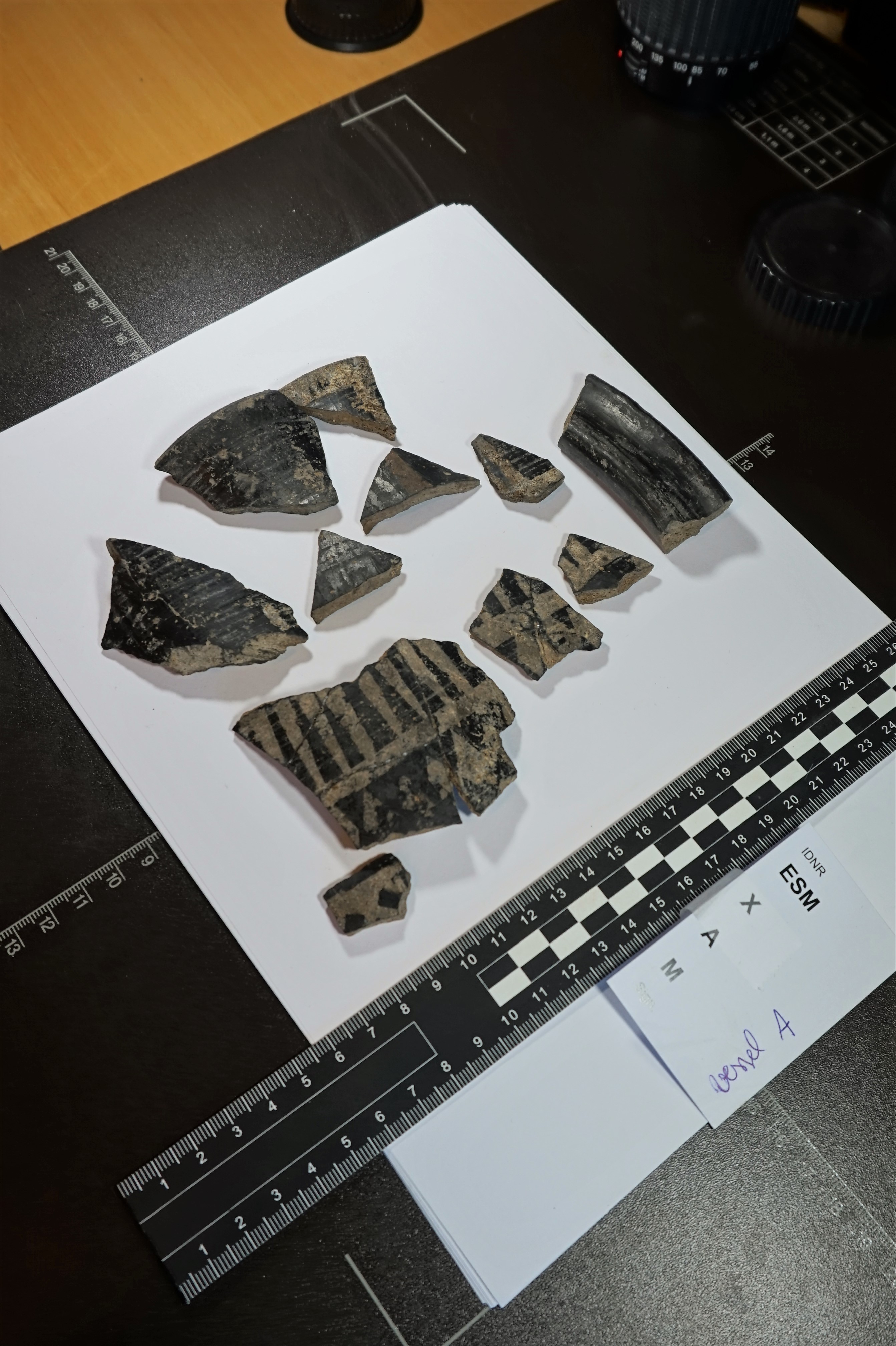Studying Tating ware from Ribe
By Postdoc Pieterjan Deckers.

By Postdoc Pieterjan Deckers
Many of the finds collected during the Northern Emporium excavation testify to the long-distance trading connections of Viking-age Ribe. So-called ‘Tating pottery’ is one of those traded goods: high-quality pitchers decorated with applied tin foil laid out in striking geometric arrangements. Tating ware was produced in the Rhineland and in northern France. It has been found on important sites all over the North Sea and Baltic region, including major trading towns like London, Hedeby and Staraja Ladoga, aristocratic settlements like Borg on Lofoten, and in high-status female burials in Scandinavia. However, numerically speaking, Ribe is one of the most prolific find spots.
During the past weeks, I have been working at the depot of the Museum of Southwest Jutland, studying the numerous Tating sherds found during our recent excavation. The main purpose of this study was to attempt to refit the many broken fragments. This serves several goals: determine a minimum number of individual pots (as sherd counts can be highly misleading as a quantitative measure); establish the typology of these vessels; and reconstruct the decorative patterns of the applied tin foil. A small number of sherds is also being subjected to scientific analysis, to help determine provenance and analyse the decoration technique.
The well-preserved stratigraphy at Ribe and the high-definition recording methods employed during the excavation further heighten the potential of this study. ‘Refit links’ may reveal the history of deposition within and around the houses at Ribe (activity layers, rubbish dumps, …) and thus, how different stratigraphic units relate to one another. Placing the Tating sherds within this contextual framework furthermore enables us to pinpoint the time and circumstances of deposition, and may help us understand how the townspeople used (and disposed of) these prestigious pitchers.
In conclusion, the detailed study of this very peculiar type of pottery not only demonstrates how trade connections tied Ribe into a network spanning from England to Russia and from southern Germany to the Arctic Circle. It also highlights how, at a very particular place and time, a ‘global’ product was entangled into the mundane practices of daily life.
